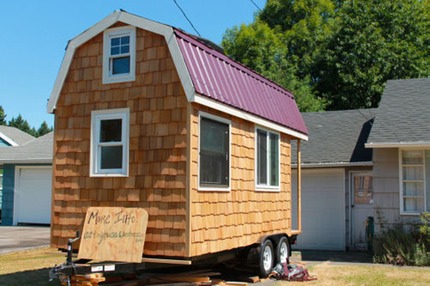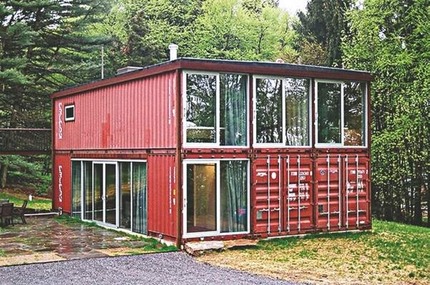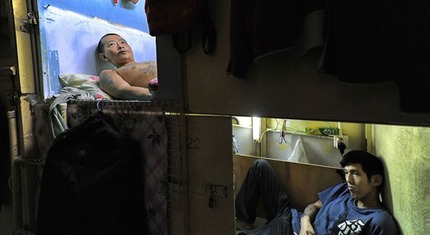Tom Ashbrook's NPR radio show On Point had a very stimulating show yesterday on Tiny Houses and Micro-Apartments: http://onpoint.wbur.org/2015/03/04/tiny-houses-micro-apartments
This photo taken July 31, 2012 shows a "tiny" house April Anson built in Portland, Ore. For the past couple of months, 33-year-old Anson and her friends have been planning, measuring, sawing and hammering their way toward completion of what might look like a child’s playhouse. But to Anson, the 19-foot-by-8-foot structure, built on a heavy metal trailer chassis, will be home when she starts a PhD program at the University of Oregon. (AP Photo/Courtesy of April Anson)
I was pleasantly surprised that the show covered the subject in such a broad, stimulating manner.
A few thoughts (not covered in the show):
- This tiny house movement, like homelessness, is basically driven by the exorbitant cost of housing and land. In the case of the homeless, it is a shrinking of the home, or one's personal space, to a cardboard box or any makeshift shelter.
- The Millennial generation is pushing back at the debt they are being burdened with, both in student loans and house mortgages. They know they are becoming debt slaves and are thinking creatively of ways to avoid this.
- The guests on the show took care to distance themselves from the clustered makeshift housing in shanty-towns in the Third World (see Mike Davis, Planet of Slums). But isn't this one possible direction this trend could take? Think of the Hoovervilles of the Depression.
- Another form of this effort to wriggle out from beneath the jackboot of the banks by reducing the cost of houses is the use of shipping containers as houses (see http://www.nakedcapitalism.com/2015/02/home-sweet-shipping-container-not.html).
- Yet another form, more dystopian and counterintuitive in that it needs to be highly capitalized, is 3D printing of houses (usually with concrete). But labor-saving is not the issue here, when we have folks willing to build their own homes. The issue is the financialization of housing and land, and the hyperinflation this has created. The same happened with higher education with student loans driving up college costs. Debt is the real villain of this piece and we can see its effects in all the costs of modern life.
- Probably the extreme of micro-apartments are the cage or coffin apartments of Hong Kong, which the poor and unemployed are condemned to live in, while the Hong Kong rich lives in mansions:
Cheung Kam Chu, 49, lies in his ‘coffin’. Below him is Wong Chi Hung. Copyright: Brian Cassey. See the full article and more photos in the Globe and Mail.
- Such is the end result of runaway asset inflation in Hong Kong. Perhaps a cautionary tale about the trends in our own society?
- These houses are for singles really, even the more appealing tiny houses highlighted by the show. Not for families or for domestic pets or even, in many cases, for folks who would like to garden or have a deeper connection with the land and Nature and farm animals.
- Yet I was deeply stimulated by all this. Even heard a very interesting eulogy for the Millennial generation (long overdue), saying that they are more introspective, more aware of themselves and the forces in the world around them, whether it be global warming or the crushing burden of debt, or the foods that they eat. Or, for that matter, the houses they live in. Indeed, everything is being re-thought, re-assessed. It is a wonderful creative time, though probably totally confusing and frightening for most individual Millennials.


